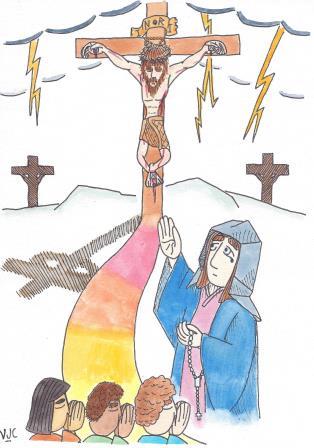What Jesus says to the women who had found His tomb empty of His body, but filled with the presence of an angel, is this: ‘Greetings. Do not be afraid; go and tell My brothers that they must leave for Galilee; they will see Me there’.
The homilist on Monday, a venerable retired priest, made a simple yet profound comment on this Gospel passage. Since so many of the apostles and disciples came from Galilee, Galilee represents ordinary life. Therefore, that means it is in our day to day lives that we are to expect to encounter the risen Lord Jesus.
That’s possibly the opposite of where we expect to encounter Jesus. On retreat, at a church conference, while on holiday or pilgrimage, or on a mountain top, isn’t that where we expect Him to show up?
Lord Jesus, please help us to recognise You, and respond positively to You, when You show up in our daily lives. Please take away our fears of encountering You. Amen.

 RSS Feed
RSS Feed